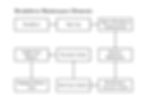
The fast-paced and constantly evolving industrial landscape is fraught with numerous inevitable challenges, and equipment breakdowns are among the most significant. These breakdowns can cause disruptions in operations, incur costs, and severely impact productivity. Whether it's a manufacturing plant, a service facility, or an infrastructure project, breakdowns can have far-reaching consequences on business performance. However, effective breakdown management strategies can mitigate these impacts and ensure smooth operations.
This article is a complete guide for comprehending, preventing, and managing equipment breakdowns across different industries. With years of expertise in the field, this book provides practical insights, best practices, and proven methodologies to help organisations reduce downtime, improve maintenance practices, and enhance operational efficiency.
This guidebook is invaluable for anyone involved in equipment maintenance and management, such as maintenance managers, plant managers, facility managers, engineers, and technicians. It covers a wide range of topics, including the root causes of equipment breakdowns, the most effective maintenance practices, how to build a robust maintenance program, and strategies for dealing with unexpected breakdowns. By implementing the practical strategies and techniques outlined in this book, organisations can improve their equipment reliability, reduce costs, and increase productivity, ultimately leading to better business results.

Elements of Breakdown Maintenance
Breakdown Slip / Breakdown Log
A breakdown slip is a crucial document organisations use to systematically record and track any details related to equipment failures or breakdowns. These slips typically include comprehensive information such as equipment details such as make, model, serial number, date, and time of breakdown, a detailed description of the issue, potential cause of the breakdown, responsible personnel, downtime duration, and signatures of relevant individuals.
A breakdown slip helps an organisation coordinate better among various departments.
Overall, using breakdown slips helps organisations improve breakdown management efficiency, reduce downtime and improve visibility.
Breakdown Communication
The mode of breakdown communication refers to how information about equipment failures or breakdowns is conveyed within an organisation. It can be verbal, written (such as emails or memos), through digital platforms (like messaging apps or incident management software), via alert systems, visual signage, or defined escalation procedures.
The choice of communication mode depends on factors like urgency, nature of the breakdown, stakeholder preferences, and organisational culture.
Effective communication ensures prompt notification, enabling timely response to minimise downtime and mitigate operational impact.
Resource Mobilization

Resource mobilisation for breakdowns involves quickly identifying and allocating the necessary resources to address equipment failures or breakdowns. This includes activating an emergency response team, ensuring the availability of workforce, spare parts, tools, and equipment, maintaining clear communication channels, and documenting all actions taken. By efficiently mobilising resources, organisations can minimise downtime, mitigate the impact of breakdowns, and ensure timely restoration of operations.
Corrective Action

Rectification of breakdowns involves promptly addressing equipment failures to restore normal operations. This process includes assessing the issue, prioritising based on severity, mobilising resources, implementing corrective actions, monitoring effectiveness, documenting the process, and conducting follow-up reviews. Organisations minimise downtime, enhance reliability, and maintain operational continuity by rectifying breakdowns.
The efficiency and effectiveness of any corrective action largely depend on the organisation's level of preparedness and maturity. A well-defined standard operating procedure (SOP), adequate training, availability of proper tools and spare parts, and a skilled workforce are the key factors that determine the time required for any repair work. These factors ensure that corrective action is carried out successfully and on time.
Root Cause Analysis
Root Cause Analysis (RCA) is a structured approach to uncover the fundamental reasons behind issues or failures. It entails problem identification, data collection, problem definition, application of RCA techniques, root cause identification, recommendation of corrective actions, implementation and monitoring of those actions, and ongoing improvement efforts.
Fishbone Diagram (Ishikawa Diagram): This technique can help you organise potential causes into categories such as people, processes, equipment, materials, and environment, which can assist you in identifying possible root causes.
5 Whys: You can ask "why" multiple times to uncover deeper layers of causation behind the problem until the underlying root cause(s) are identified.
Fault Tree Analysis: By identifying potential failure modes and their contributing factors, this technique can help you analyse how they combine to cause the problem.
Failure Mode and Effects Analysis (FMEA): This technique can proactively identify potential failure modes and their effects, and prioritise them based on severity, occurrence probability, and detectability.
Root Cause Mapping: This technique involves creating a visual map of the problem and its contributing factors to trace back to the root cause(s).
Preventive Action

Preventive action can be defined as the measures taken in advance to avoid potential problems, errors, or failures in the future.
One of the most effective preventive action methods is through FMEA, or Failure Mode and Effects Analysis. This approach systematically identifies potential failure modes within a system, process, or product, analyses their effects, and prioritises them based on their severity, occurrence probability, and detectability.
The FMEA process includes the following steps: identifying components or processes, analysing failure modes, assessing their effects, assigning them severity, occurrence, and detectability ratings, calculating a Risk Priority Number (RPN), prioritising high-risk failure modes for mitigation, and monitoring and reviewing effectiveness.
FMEA is an excellent proactive risk management tool that helps organisations avoid failures, improve quality, enhance safety, and reduce costs.
Update Equipment History Card

An equipment history card is a logbook that tracks the complete history of a specific piece of equipment. It includes identification details, maintenance records, operational data, calibration and testing information, incident reports, modifications and upgrades, supplier and warranty details, and user notes. This comprehensive record assists in maintenance planning, performance analysis, compliance tracking, and decision-making related to equipment management.
This article is just the beginning of a fascinating journey. If you're eager to learn more, please explore the vast world of online resources available. From articles to webpages to videos, there are countless ways to delve deeper into the subject and discover greater detail. Let your curiosity guide you as you navigate the wealth of information available on the internet. Happy exploring!